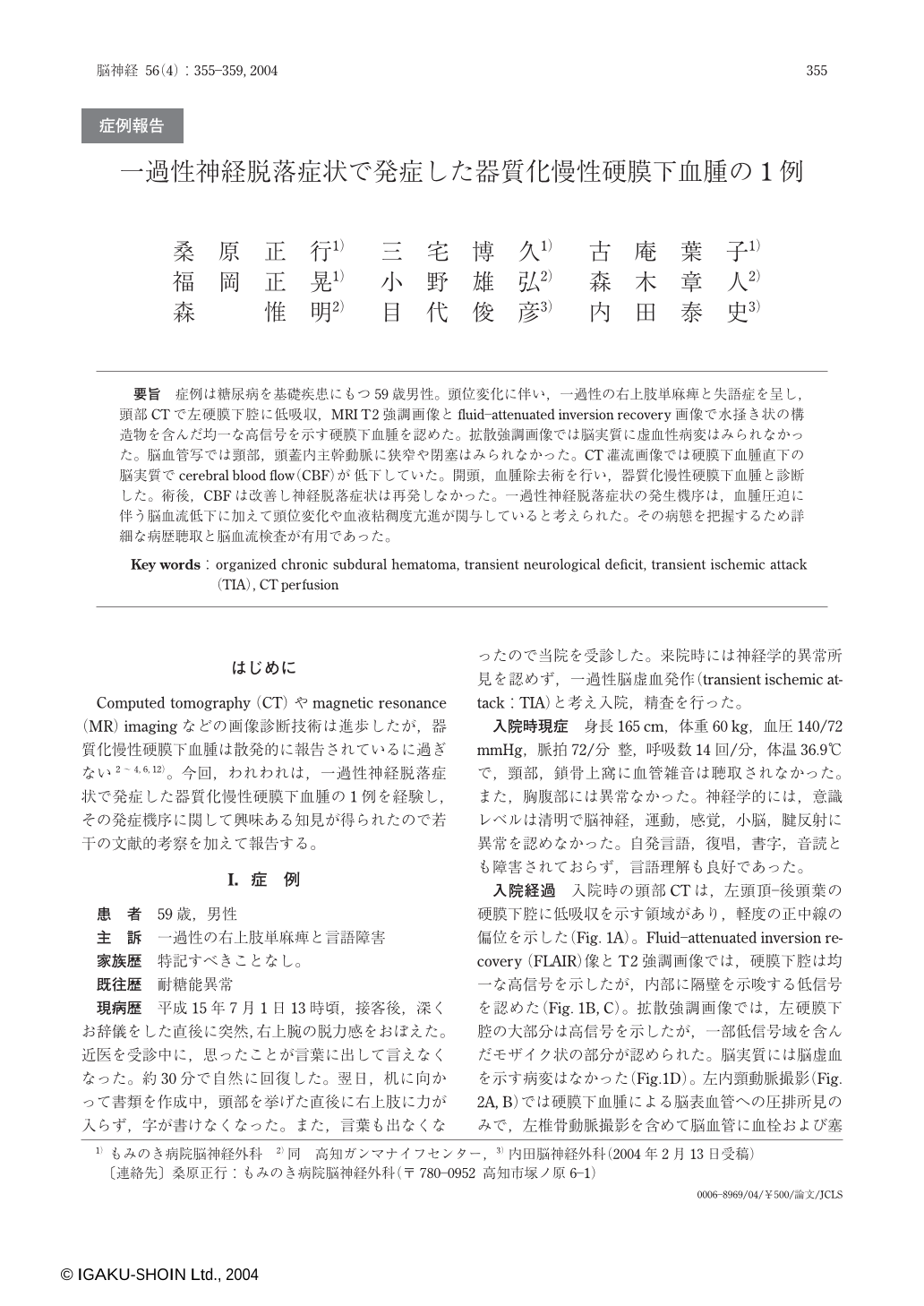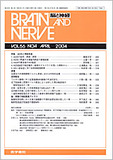Japanese
English
- 有料閲覧
- Abstract 文献概要
- 1ページ目 Look Inside
要旨 症例は糖尿病を基礎疾患にもつ59歳男性。頭位変化に伴い,一過性の右上肢単麻痺と失語症を呈し,頭部CTで左硬膜下腔に低吸収,MRI T2強調画像とfluid-attenuated inversion recovery画像で水掻き状の構造物を含んだ均一な高信号を示す硬膜下血腫を認めた。拡散強調画像では脳実質に虚血性病変はみられなかった。脳血管写では頸部,頭蓋内主幹動脈に狭窄や閉塞はみられなかった。CT 灌流画像では硬膜下血腫直下の脳実質でcerebral blood flow(CBF)が 低下していた。開頭,血腫除去術を行い,器質化慢性硬膜下血腫と診断した。術後,CBFは改善し神経脱落症状は再発しなかった。一過性神経脱落症状の発生機序は,血腫圧迫に伴う脳血流低下に加えて頭位変化や血液粘稠度亢進が関与していると考えられた。その病態を把握するため詳細な病歴聴取と脳血流検査が有用であった。
A 59-year-old diabetic male presented with transient motor aphasia and monoparesis of the right upper limb. Brain CT scan showed a low density area in the left subdural space with a mild midline shift. Magnetic resonance(MR) T2-weighted and fluid-attenuated inversion recovery(FLAIR) imagings revealed homogenous hyperintensity with a hypointense web-like structure in the subdural hematoma. Cervical MR angiography showed no abnormal lesion at the bifurcation of the bilateral common carotid arteries. Conventional cerebral angiography showed an avascular, crescent, space-occupying mass over the left hemisphere without an etiologic lesion of cerebral ischemia. CT perfusion imagings indicated reduced cerebral blood flow(CBF) and prolonged mean transit time(MTT) in the left middle cerebral artery territory underneath the subdural hematoma. No epileptic discharge was found in electroencephalogram. Operative findings indicated that the hematoma was encapsulated with thickened outer and inner membranes including paste-like materials, and the brain surface was intact. Postoperative CT perfusion imagings revealed normal CBF and MTT. The pathophysiological mechanism which the chronic subdural hematoma produces the transient neurological deficit is still uncertain. The mechanical pressure of the hematoma on the neighboring cerebral vessels may cause impairment of blood flow leading to cerebral ischemia and paralysis of function. Our case indicated the transient neurological deficits attributed to a decreased CBF around the subdural hematoma and a change in pressure exerted by the hematoma during changes of head position and increased blood viscosity.
(Received : February 13, 2004)

Copyright © 2004, Igaku-Shoin Ltd. All rights reserved.


